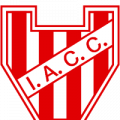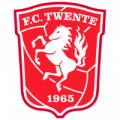Read Layth Yousif's spotlight on William Saliba and his performance for Arsenal U21s against AFC Wimbledon.
..............
In the words of former England boss Sven Goran Eriksson: ‘First half good, second half, not so good.’
It became a running joke with fans and media that the Swede would explain disappointing performances with the epithet, after a series of underwhelming results that would eventually come to define his reign.
While hopes are high for Arsenal’s £27m defender William Saliba, the same line could be applied to his Tuesday night show in south-west London.
Prologue: All hail the Dons
A behind-closed-doors match in the last 32 of the Papa John’s Trophy between AFC Wimbledon and Arsenal U21s is not a glamorous occasion to say the least.
For those who think the lifestyle of a sports journalist is glitzy, try attempting to locate the new Plough Lane amid a deserted building site, industrial estates and railway tracks on a freezing cold evening during a pandemic.
No matter Plough Lane is a work in progress, as the admirable Dons deserve respect for the way they rose, phoenix from the ashes, on a 20-year journey from park football to League One, after their identity was appropriated by Milton Keynes.
Standing on the corner of Plough Lane as cars and vans sidled blithely past, was the humble Wimbledon memorial.
In case anyone should forget, this was the club that won the 1988 FA Cup Final against the aristocrats of Liverpool at Wembley - in one of the greatest shocks in history of the world’s oldest knockout tournament.
The black stone memorial was also a salutary reminder that mourned the premeditated death of the iconic Dons.
Yet, their badge, glinting in the reflections of vehicle headlights on Tuesday night, was symbolic of the club which re-emerged via the depths of non-league, via the Combined Counties Premier Division as well as a testament to the power of fans’ loyalty, true faith and hard work.
The badge and plinth was to celebrate the greatest day in the club’s history, but also to honour a club that refused to die.
While the new Plough Lane is still a work in progress as the 9,400 capacity ground gears up for supporters to return to their spiritual home early in 2021, the same could be said of Saliba.
For Tuesday evening proved Saliba is still very much a work in progress at Arsenal.
Saliba: The story so far...
It was a strange decision at the time and remains one to this day.
Cash-strapped Arsenal purchased teen sensation Saliba from Saint Etienne in the summer of 2019 for a whopping £27m – the fee, as much as the talent, attracting great interest.
Yet, the first thing Raul Sanllehi and then head coach Unai Emery did was to lend Saliba back to the Stade Geoffroy-Guichard and Les Verts for a year.
Yes, the decision was part of transfer demands made by Les Verts, but surely a Premier League giant such as Arsenal didn’t need such clauses to get a deal over the line?
Or was it because they saw Saliba’s development better suited to another year in Ligue 1?
Either way, Saliba is at Arsenal now - unlike Sanllehi and Emery, long-departed after underwhelming spells.
Saliba: The boy from the Bondy banlieue
Bondy, where Saliba - and Kylian Mbappe hail from - is an unprepossessing working-class suburb situated to the north east of Paris. It forms part of a concrete sprawl of satellite towns on the outskirts of Paris.
While Bondy may only be a few miles from the glamour of central Paris on the RER line it is a world away.
Saliba and Mbappe's hometown is part of the chain of banlieues, literally doughnut, that are an outer ring of locales circling a far richer centre. They are branded by well-heeled outsiders full of social prejudice as no-go areas.
The truth lies far from the stigma - for while the banlieues face urban deprivation and cuts in government funding for vital services including schools and play areas, such places are vibrant, melting pots where excellence in sport and urban art are seen not only as forms of self-expression but of a way out.
There is no doubt Saliba has earned his big-money move to the glitzy lights of the Premier League.
So far, so good. But this is where the hard work starts, where the journey commences, not ends.
Saliba: 'First half good...'
To succeed at the top level, a modern-day centre-back needs: strength, speed, aerial prowess, leadership qualities and ability on the ball.
The first impression you get looking at Saliba in the red and white is of a powerful centre-back, even at the tender age of 19.
Yes, natural attributes have allowed him to reach the height of 6ft 4in, but his body is an amalgam of athleticism and towering physique.
The verdict is that the young Frenchman has strength, and will not be outjumped by many.
Early verdict
An early drive out of defence at Plough Lane on Tuesday evening suggested he is as comfortable with his touch as he is with his overall technique.
His sense of anticipation was evident when he cut out several Dons attacks, effortlessly snubbing out danger, while he was certainly not intimidated in a crowded box at corners when facing a committed lower league side.
Saliba has pace to burn
What also impressed was Saliba’s outstanding turn of pace.
In one particular instance in the first half, after supplementing an attack which broke down, Saliba raced full on 60 yards, to not only track back, but to jockey the man in possession, which ultimately led to Arsenal winning the ball back.
Such speed is as welcome as it is important. And Saliba has pace to burn.
Yet, as a 19-year-old Saliba is still learning his trade, and no-one expects another Tony Adams to emerge from the gilded Arsenal Academy any time soon.
So in terms of leadership qualities, do not expect a tub-thumping, wild-eyed centre-half in Saliba.
But what he can improve on is his organisational skills.
The ability to interact with colleagues along the backline as well as defensive midfielders. Under the tutelage of Steve Bould at the U21s and U23s you would like to think that will improve. Let’s hope so, because being an intelligent vocal presence in an important trait to have as a defender.
Technical ability
In that checklist, ability on the ball is the final piece in the jigsaw, the crowning glory - and Saliba has ability on the ball.
The great cultured centre-backs with defensive pedigrees of the past have always had a sense of timing and elegance, far removed from mere mortals.
Think Rio Ferdinand bringing the ball out of defence at his peak, unhurried amid the maelstrom. Saliba has echoes of this.
Many a time, when on the ball in the first half, against a determined Dons side, Saliba looked calm and composed, technically proficient, elegant yet powerful.
Harried but never hurried
At times he was harried but he never looked hurried. Yet, his grace under pressure was tested. And yet, you felt, this was one area where opponents could look to target him.
As Arsenal U21s walked off after a hard-fought opening 45 minutes against opponents with regular League One appearances under their belt, you felt Saliba was a real talent, but you wanted to see how he coped under real pressure.
The second half gave us an indication that Saliba is a still work in progress.
Saliba's progress
While Mbappe was progressing through the ranks of youth, then professional football, a young Saliba was being coached by none other than Kylian's dad, Wilfried.
Saliba was six years old when Wilfried first came across him near to the tower blocks and crumbling concrete - fertile breeding grounds for footballing talent.
Saliba caught Wilfried's eye with an athleticism and talent full of skill and natural ability allied with a toughness that growing up in such a place demands.
Uneven dirt fields were as much part of the environment as street football and competitive games on astroturf.
Unforgiving places to hone touch, technique and temperament.
So, it was wonder Saliba started life as a midfielder before dropping back into defence, where the story really began.
On a Tuesday chilly evening against a Wimbledon side eager to take on their more renowned opponents, Arsenal had a terrible second half.
Martinelli update
No-one emerged from a shocking second-half display with any real credit – if we exclude the return of the lively Gabriel Martinelli which only lasted a pre-arranged 45 mintues.
In a bid to get more playing time for the Brazilian starlet, Bould, no doubt guided by Mikel Arteta, selected Martinelli in the starting XI.
While not as influential as his talents would allow, Martinelli’s excellent off the ball running was a feature of his play in the opening 45 minutes, as was his commitment and determination to chase lost causes, before he was replaced at the break.
Martinelli's first-team return cannot be too far form now as he improves his fitness on a daily basis.
Arsenal and Saliba: 'Second half not so good...'
For those Arsenal young guns that remained on the pitch in the second half, the experience was a chastening one.
Tim Akinola, a former Huddersfield Town midfielder, was sent off for two yellow cards in the 79thminute, the second for kicking the ball away in frustration. It capped a frustrating night for the former Brighouse Town loanee after giving the ball away in the build-up to substitute Ryan Longman, who slotted home past Gunners keeper Karl Hein with aplomb 11 minutes earlier.
Brighton loanee Longman, who had never actually been to Plough Lane prior to Tuesday night, then set up the second for Paul Osew to double the lead and make it 2-0.
Saliba sees red...
Saliba, no doubt frustrated himself, then went over the top with a rash late challenge that earned him a second booking and Arsenal’s second red card of the evening.
The lowdown
To those that ask, yes, but apart from losing 3-0 and being sent off, how did Saliba get on, is akin to Abraham Lincoln’s wife being asked, ‘yes, but apart from the bullet that killed your husband, how did you enjoy the play?’
The fact is Saliba was part of an experienced centre-half pairing with Sokratis that ultimately conceded three goals against a League One side, albeit with Joe Piggot’s goal to make it 3-0 being against nine men, with Saliba absent.
However, the fact he was sent off for two bookable offences, suggests a lack of concentration at best, and at worst a temperament that still needs to mature.
And it is this which appears to give Arteta his conundrum: Is Saliba mature enough to play top-flight football week in week out - in a struggling side, 15th place in the table, with no real leaders to boot?
Saliba is a huge talent and one that Arsenal supporters can look forward to - just not immediately
On the evidence he has seen so far, despite all the natural ability he possesses, Arteta is probably right to hold back on Saliba at the moment.
Here’s hoping Saliba’s Tuesday night against the real Dons will go a long way to adding to his steep learning curve.
For he is a vast talent. But one that needs to learn and adapt.
With Saliba's imminent arrival on the Premier League stage to shine for the aristocrats of Arsenal, he will join a long line of boys from the banlieues - Manchester United's Paul Pogba from Lagny-Sur-Marne and Roissy-en-Brie, Chelsea's N’Golo Kanté from Suresnes, Juventus' Blaise Matuidi in Fontenay-sous-Bois and Manchester City's Benjamin Mendy in making their mark in football.
While they have all traded in poor beginnings for the trappings of money and fame at the top level of the beautiful game - they are still considered 'authentic' heroes and have come to represent those they left behind.
With his forthcoming progression to the Arsenal first team, Saliba is yet another player who can join that litany of names - as well as a role model for Bondy's and the youth of the banlieues.
Just not quite yet.







































